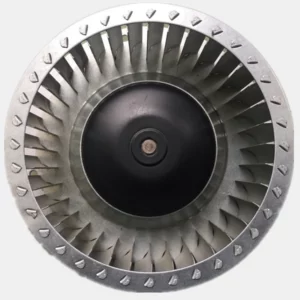A Comparative Analysis: Applications and Benefits of Axial Flow Fans and Centrifugal Fans
Axial flow fans and centrifugal fans are two common types of air-moving devices used in various industries and applications. While both fans serve the purpose of generating airflow, they differ in terms of design, performance characteristics, and applications.
Here are the respective applications and benefits of axial flow fans and centrifugal fans to understand their unique strengths and suitability in different scenarios:
I. Axial Flow Fans:
Axial flow fans, also known as propeller fans, are designed to move air in a straight line parallel to the fan’s axis. They feature a propeller-like design with blades that generate airflow by creating a pressure difference.
Applications of Axial Flow Fans:
- Ventilation Systems:
Axial flow fans are commonly used in ventilation systems to circulate and exhaust air in buildings, warehouses, and industrial facilities. They facilitate the exchange of fresh air, remove stale air, and maintain a comfortable and healthy environment. - Cooling of Electronic Equipment:
Axial flow fans are employed for cooling electronic equipment, such as servers, computers, and audio/video components. They help dissipate heat generated by these devices, preventing overheating and ensuring optimal performance. - Heat Exchange Systems:
Axial flow fans are utilized in heat exchange systems, such as radiators and condensers. They assist in removing heat from fluids or gases, ensuring efficient heat transfer and maintaining the desired temperature.
Benefits of Axial Flow Fans:
- High Airflow Volume:
Axial flow fans are capable of generating a large volume of airflow, making them ideal for applications where high airflow rates are required. - Energy Efficiency:
Compared to centrifugal fans, axial flow fans are generally more energy-efficient, consuming less power for the same level of airflow. - Space-Saving Design:
Axial flow fans have a compact design, allowing for installation in space-constrained environments. They are particularly suitable for applications where space availability is limited.
II. Centrifugal Fans:
Centrifugal fans, also known as radial fans, operate by creating airflow through the radial movement of air. They feature an impeller with curved blades that draw air into the fan and discharge it at a perpendicular angle.
Applications of Centrifugal Fans:
- HVAC Systems:
Centrifugal fans are extensively used in heating, ventilation, and air conditioning (HVAC) systems. They provide the necessary airflow for ventilation, air circulation, and temperature control in residential, commercial, and industrial buildings. - Industrial Processes:
Centrifugal fans are employed in various industrial processes, such as material handling, drying, and cooling. They assist in removing dust, fumes, and airborne particles, ensuring a safe and clean working environment. - Air Pollution Control:
Centrifugal fans are an integral part of air pollution control systems, including scrubbers and exhaust systems. They aid in capturing and removing pollutants from industrial emissions, contributing to environmental sustainability.
Benefits of Centrifugal Fans:
- High Static Pressure:
Centrifugal fans are capable of generating high static pressure, making them suitable for applications that require airflow against resistance, such as in duct systems or equipment with restrictive airflow paths. - Directional Airflow:
Centrifugal fans provide a directed and focused airflow, allowing for precise targeting of cooling, ventilation, or exhaust in specific areas or equipment. - Versatility in System Design:
Centrifugal fans offer flexibility in system design due to their ability to handle complex ducting arrangements and overcome system pressure losses effectively.
Axial flow fans and centrifugal fans are both valuable tools for generating airflow in various applications. Axial flow fans excel in high-volume, axial fan and centrifugal fan low-pressure scenarios, such as general ventilation and electronic cooling, while centrifugal fans excel in situations requiring high static pressure and directed airflow, such as HVAC systems and industrial processes. Understanding the unique applications and benefits of these fans allows for informed decisions when selecting the appropriate fan type for specific requirements, ensuring optimal performance, energy efficiency, and overall system effectiveness.
